The government offices are finally shifting to Srinagar and the civil secretariat will open early July in Srinagar. Employees will operate from ‘as is where is’ basis indicating that both the secretariats will be operational. Will it make a difference now, writes Masood Hussain
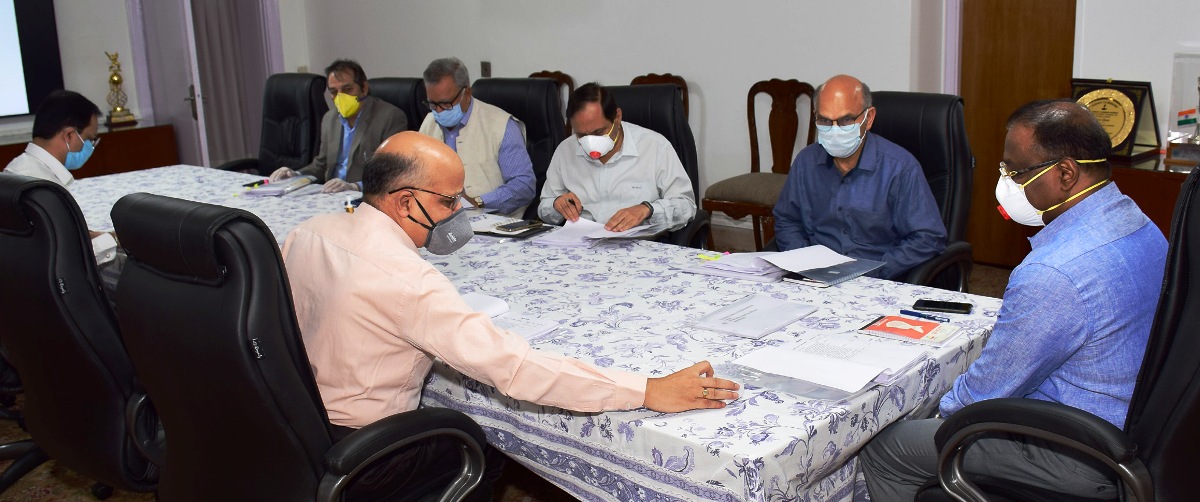
Zareef Ahmad Zareef is Kashmir’s most prominent contemporary raconteur who has the knowledge and the capacity to share and communicate. At the peak of the pandemic, he dusted his library to rediscover his book Kaeth Cheh Tatie, a collection of his 65 essays written in chaste Kashmir and published in 2014. Focussing around the socio-political and economic subjects, these essays suggest that while things change the anecdotes of the memories remain.
Unable to move around, Zareef utilised the low-speed internet to read a major chapter from his book on social media. The chapter revolving around the chief cleric of Kashmir attempted explaining the governance response to the last major Cholera epidemic in the late nineteenth century during the reign of Maharaja Partap Singh, who ruled Kashmir, the family possession, for around 40 years.
As the Wabah spread in Kashmir, Zareef would read, the ruler fled from Kashmir to Jammu. There, he met, the top Hindu priests and sought a Hawan be organised. Though the Raghunath temple priests said a Hawan in Jammu – far away from Kashmir, may not have any impact on the epidemic, they still gave him a mantar that they suggested should be printed and given to every home and it will help them escape from the crisis.
In Kashmir, a Muslim majority place, the Maharaja’s government asked the people to pay for the printed copy of the mantar, which they refused. Later, the police was used to pin a copy each on their main doors and its costs were extracted from them. The governance structure lacked any local involvement or participation and the system was managed by durbar through police and the officers, mostly hired from the plains. This, however, was not supposed to have any impact on the epidemic.
Unchanged Approaches
French writer Jean-Baptiste Alphonse Karr once said – plus ça change, plus c’est la même chose (the more things change, the more they remain the same). Almost 125 years later, as Kashmir is facing the pandemic, the situation exhibits the same approach. Perhaps the Sanskrit amulet is the only missing item.
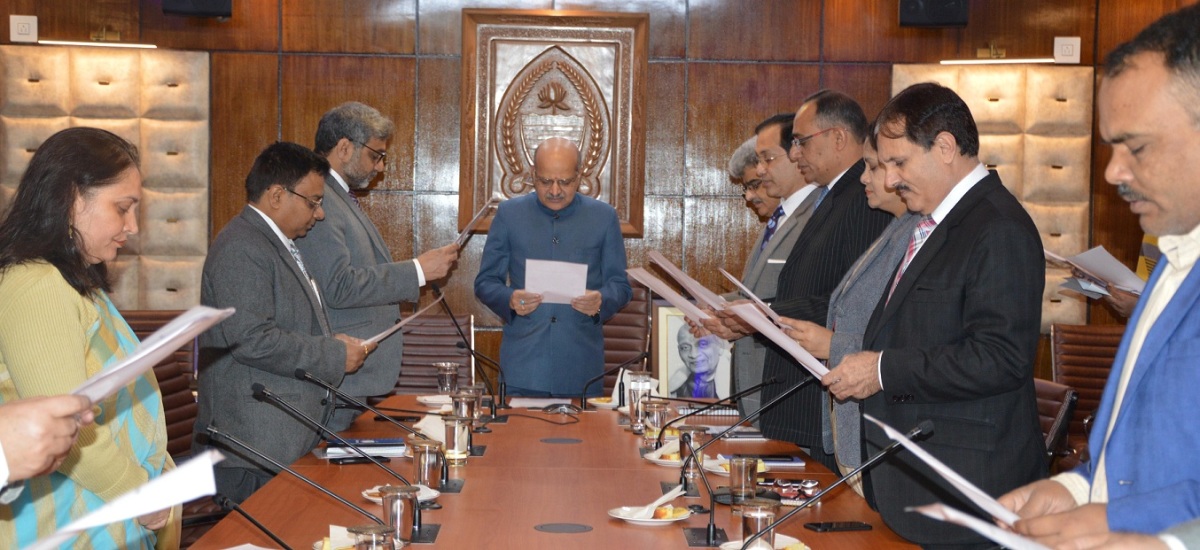
As India made its fight against the virus formal, the first decision that was taken by the MHA (Ministry of Home Affairs) in Delhi, the de-facto ruler of the Union territory of Jammu and Kashmir that darbar will not go to Srinagar for its routine six-month stint. Initially, however, it was suggested that the governance structure will be temporarily bifurcated with some officers operating from Srinagar and some from Jammu. As some people in Kashmir reacted to the ‘indecent proposal’, it was officially announced that dabar will be delayed and will not keep its routine date with Kashmir, maybe for the first time in around 150-odd years.
With the offices restricted to Jammu, the Lieutenant Governor G C Murmu and some members of his administrators did fly a few times to Srinagar to chair the meetings and make necessary reviews of the counter-Covid-19 efforts in Kashmir, apparently the main focus of the Coronavirus. Insiders in the government said when the media in Delhi started linking the virus with a particular faith (read Tablighi Jamaat) the unease in the system got vocal suggestion administration should avoid getting pushing into the Red Zone.
Stuck In Secretariat
Darbar Move is a laborious exercise but it is not as if it is unaffordable. Officials said it involves the movement of around 5000 employees and maybe a few scores of truckloads. In Srinagar, commoners do ask that if the government could manage to get back home more than 120 thousand people – mostly Kashmiris, stranded within and outside India, using a lot of resource including trains and aircraft, was it impossible to get 5000 people to Srinagar from Jammu, less than 300 km away?
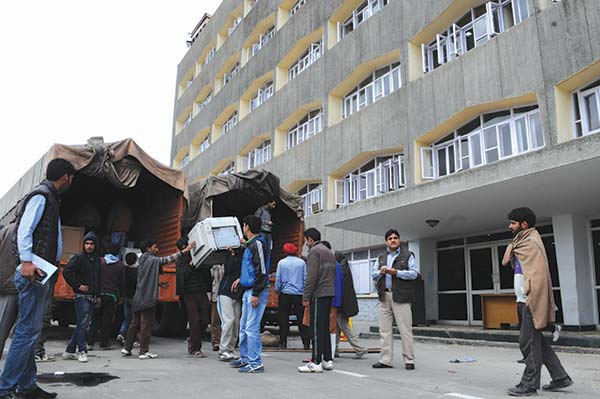
The fact of the matter is that 98 per cent of the Kashmiris’ who are with the move offices are home. Had the darbar moved as per the traditions, the case would have been the same in case of non-Kashmiri workers in the government. So darbar did not move to Srinagar either for the 50-odd administrators who run the skirted state or the MHA wanted to convey that the age-old traditions within and outside the system are due for a change.
Whichever is correct, the fact of the matter is that the Covid-19 is dominating on almost everything. Nothing much is happening. Development across the country is at a halt and the governance is restricted to the issues of top priority, again the pandemic. Health and policing are the top priorities even though the systems at the basic level including the consumer affairs, fuel distribution systems and municipal affairs are running against odds.
Devastated Economy
The lockdown has had a devastating impact on the economy across India. In case of Kashmir, however, it has been crippling because the Covid-19 came at a time when the basic economic activities were exploring the ways and means to bounce back to the normalcy after being in induced hibernation since August 5, 2019, when TV conveyed Jammu and Kashmir that its status and systems have changed.
The Reserve Bank of India has given concessions to the people in paying the monthly instalments for six months but has not offered even an idea about what will happen to the interest liability that the debts will generate for half a year. The crisis is devastating for the major bank accounts in trade, industry and the services sector. The joint press conference by Kashmir’s trade and industry on June 3, gave just an idea about what is happening to Jammu and Kashmir.
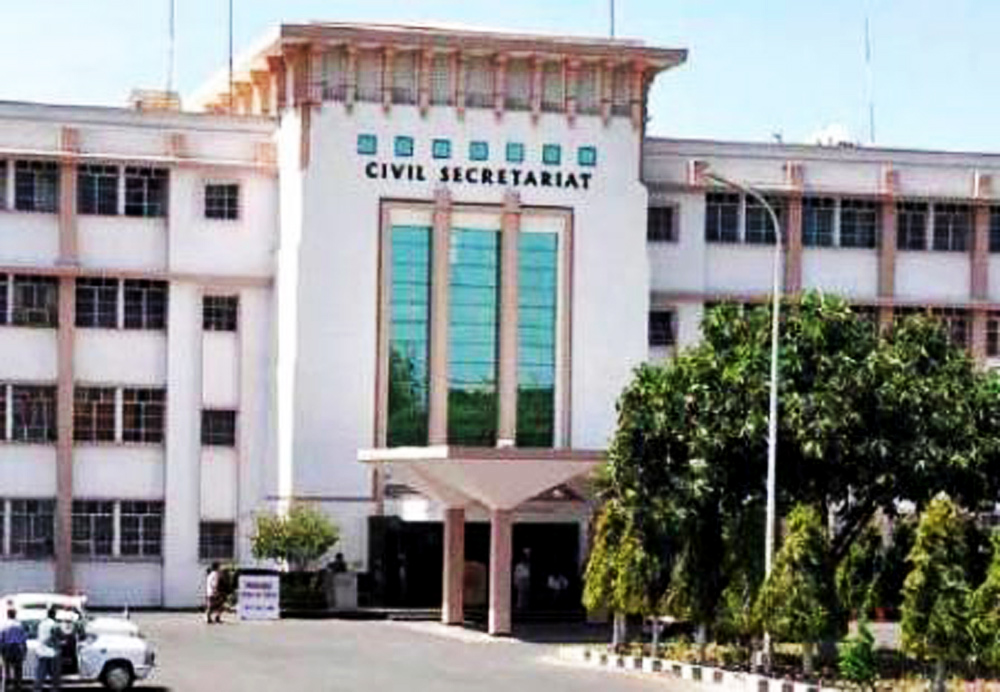
Regardless of the political dichotomy that, many believe Kashmir and Jammu and exhibiting, the larger reality that is being ignored is that the economy of the two regions is so integrated that the nosedive that Lal Chowk in Srinagar will indicate in businesses will sharply manifest itself in Bari Brehmna and Kanak Mandi in Jammu. Since the Jammu family purchased Kashmir from the British by back-stabbing the last resistance to East India Company in 1846, the markets of the two regions are so integrated that even a disruption in Kathua will have an impact in Kupwara. This has nothing much to do with the screwdriver entrepreneurs who have been coming to Jammu’s sprawling industrial estates for claiming incentives because they neither produce nor sell in Jammu and Kashmir.
Kashmir has already lost three crops to the mess – the apple harvested in the 2019 fall, part of which was stored for better yield and could not get even one-third of it. One grower said he sold the finest apple that he produced for Rs 300 in Delhi when he had already paid Rs 430 per box on various items from his orchard to the stores and finally transporting it to the market that was already deserted by the Covid-19. The cherry and strawberry was also consumed locally at throwaway costs. Overnight, the entire Kashmir produce is a buyer’s product now. Part of the mess, however, lies with the massive fall in the purchasing capacity of the consumers within and outside Kashmir.
A Brutal Contagion
While society is paying so much of the costs, the virus has been unsparing. It has been brutal in attacking the healthcare workers and the police, albeit at a smaller scale. Even the bureaucracy has not been so successful in preventing the contagion from getting into the policymaking circuit. At the peak of lockdown, one adviser received his wife and son at Jammu only to know that they carried the infection to the family.
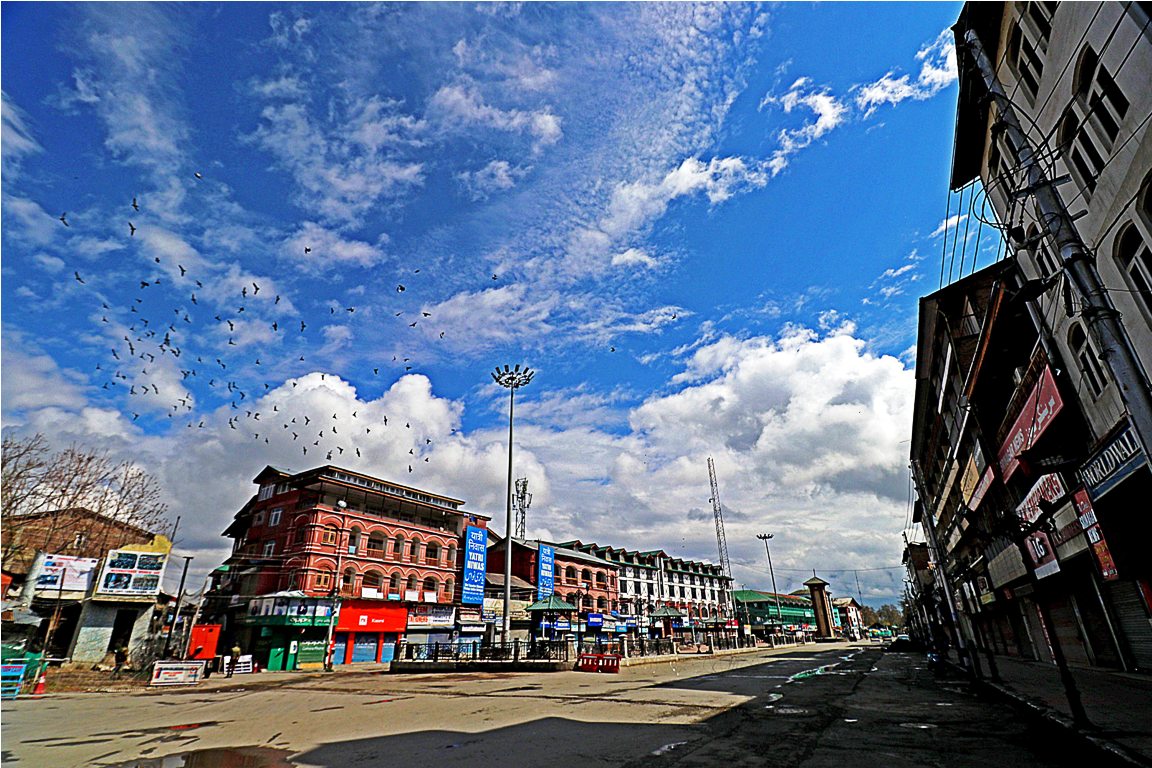
In yet another case, a senior officer, who was presiding over the evacuation of the stranded subjects of Jammu and Kashmir, already suffering from COPD (Chronic obstructive pulmonary disease) could not wait for the outcome of his nasopharyngeal samples test that he presided over multiple meetings. There was no option but to isolate the officer. However, his meeting added to the insecurity of a number of people in the governance set-up who opted for self-quarantine. The contact tracers had to scan the bureaucrat’s schedule from Srinagar to Jammu and locate almost 100 people, including the crew and the co-passengers in the aircraft, to suggest them voluntary home quarantine. Most of them have tested negative, so far.
This, health officials in Srinagar said, is an “additional burden” that could have been “avoided” in normal circumstances.
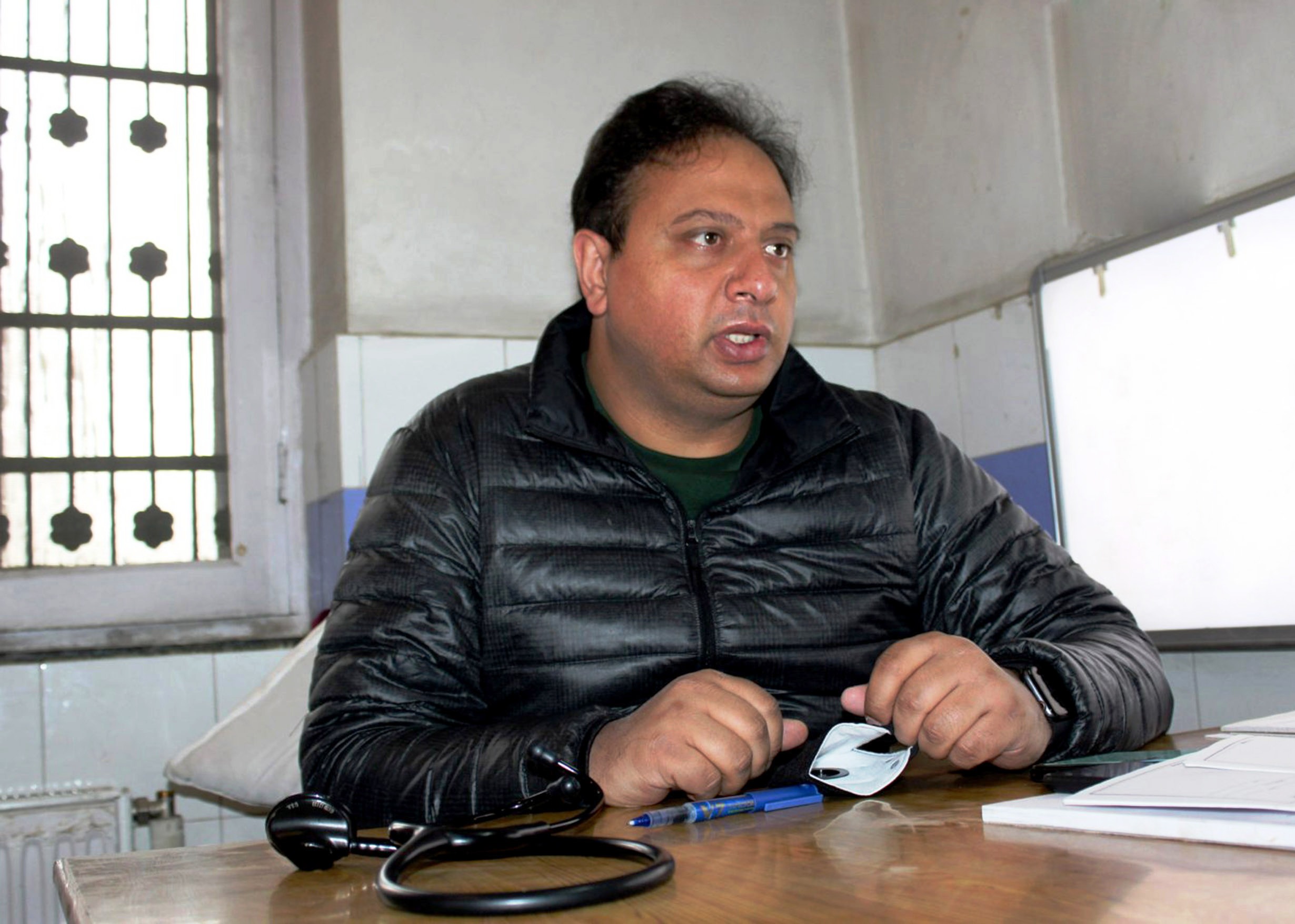
At a time when sections within the system are trying their level best to stay away from the contagion, there are a few who are carrying the infection and still working. A pulmonologist, Dr Naveed Nazir Shah, heads Kashmir’s major Covid-19 facility, the Chest Disease Hospital. He tested positive last week. He announced his infection on the social media and started working normally in his hospital while being in quarantine. After all, there is no space that is impregnable for the contagion. Better is to face it because, even after having the vaccination, humankind will have to live with it for a long time.
Response
At ground zero, the administration responded very well. Massive contact identification, mass quarantine process and the aggressive testing were the three main ingredients of the so-far successful counter Covid-19 efforts. With more than 4000 cases and 53 deaths, Jammu and Kashmir is pretty safe as on the day.
But Kashmir is not the red zone completely. Srinagar does not fall in the list of Indian cities, which are declared hot zones based on hard numbers. Why Srinagar should not resume part of the commercial activities that have been frozen for almost 10 months now?

